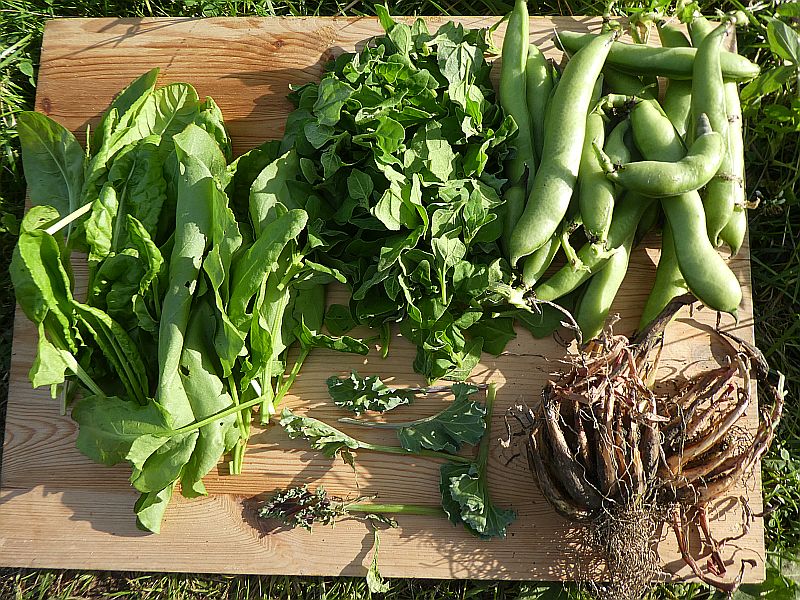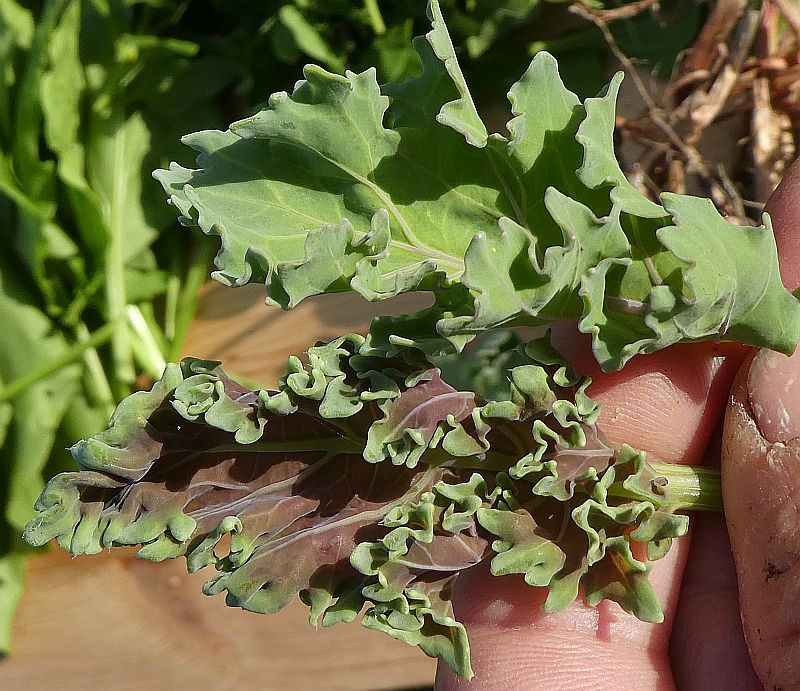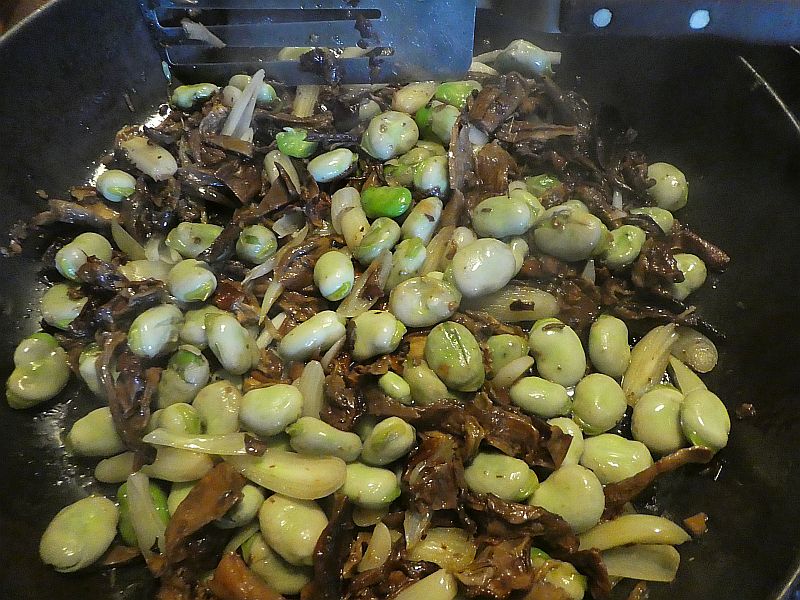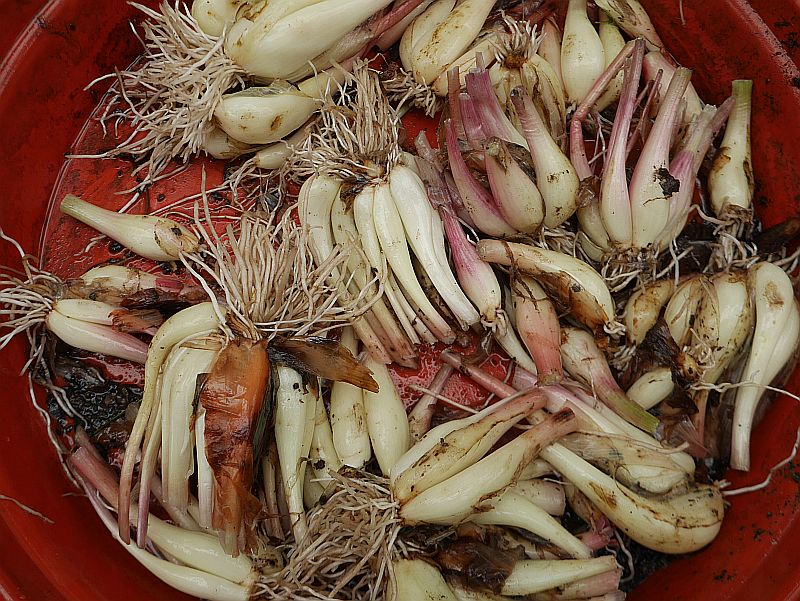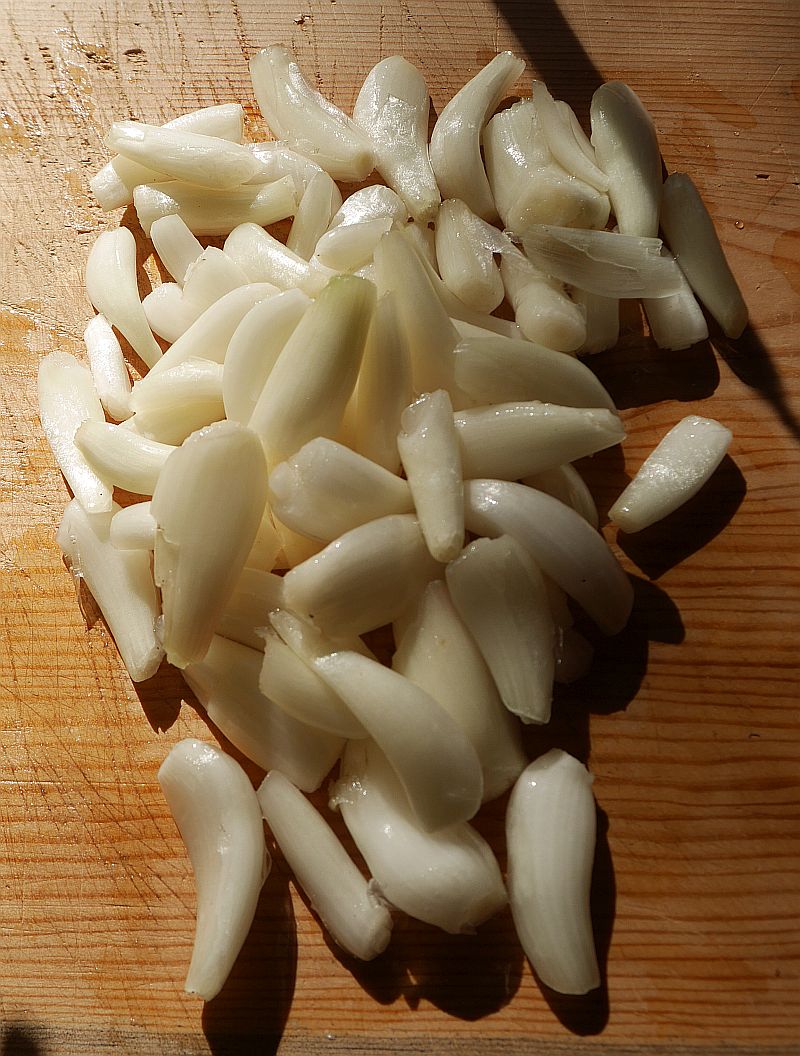Yesterday was St. John’s Eve and many Norwegians (and other Scandinavians) celebrated what is known here as Sankthans or Jonsok with communal bonfires, the big midsummer celebration. Sankt Hans is a short form of Sankt Johannes. There is a special perennial onion which was traditionally harvested on this day in the Netherlands, which I believe to have a much large potential than its current status as a local food crop, as it is so much easier to grow, in particular in areas increasingly suffering from summer droughts and water shortages and avoids common pests of onions and shallots by its early growth and perhaps also resistance. If nothing else, it complements shallots and onions in that it is available much earlier in the year!
There is genetic evidence that St. John’s onion (Johannes-løk) has a unique triparental origin A. × cornutum with three putative parental species, A. cepa, A. pskemense, and A. roylei. Hardiness is probably bestowed by hardy Allium pskemense which has been growing in the Ringve Botanical Gardens in Trondheim for many years. A similar hybrid has been found both in Germany, Croatia and India. It was perhaps more widely cultivated in the past and these are just remnant populations. On 21st June I harvested the Croatian accession from the Onion Garden Chicago at the Ringve Botanical garden which had been left for two years resulting in hundreds of tightly packed onions and on 22nd June from the World Garden at the Væres Venner Community Garden. I replanted in both gardens single bulbs separated by about 10cm. in a roughly circular patch.
Last night, St. John’s Eve, I started a vegetarian midsummer tradition by making St. John’s Felafels with dried broad beans stored since the autumn and golpar spice (from dried seeds of a mix of Heracleum sp.).
See more about Johannes’ shallot at https://www.edimentals.com/blog/?p=22601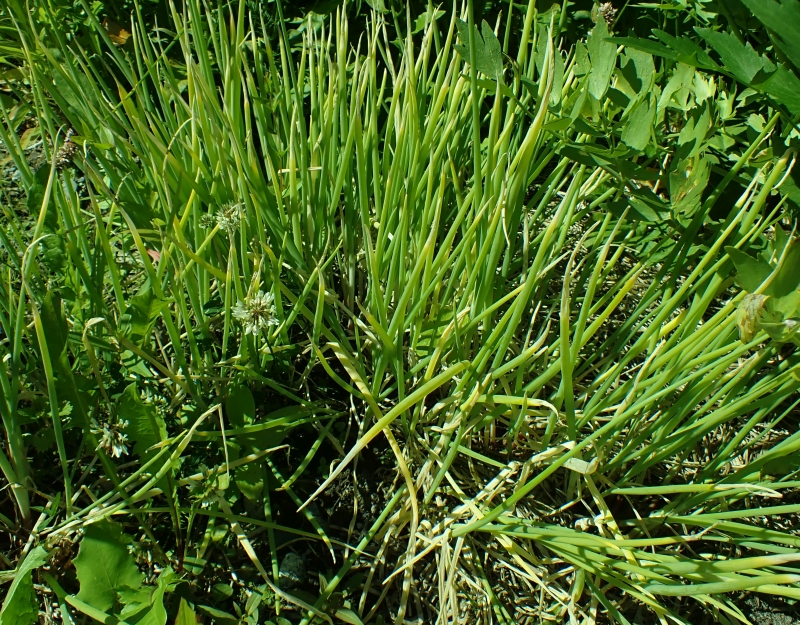

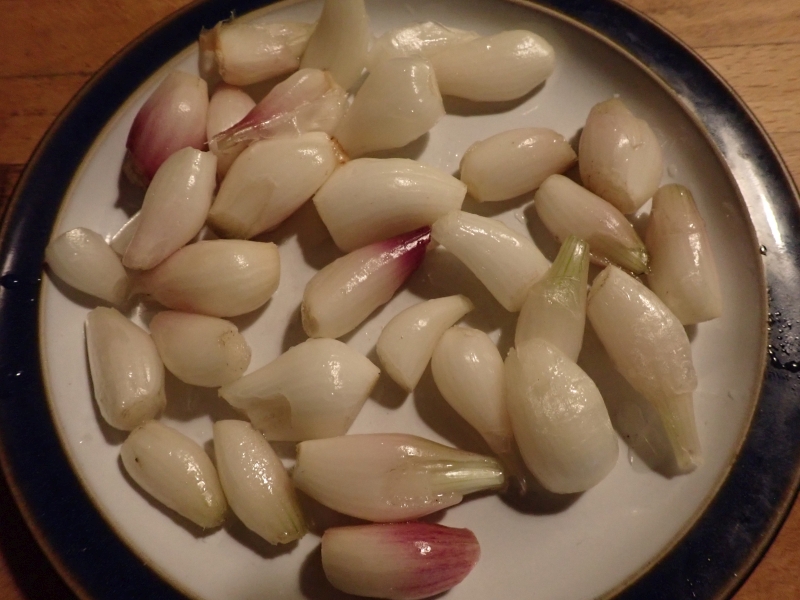


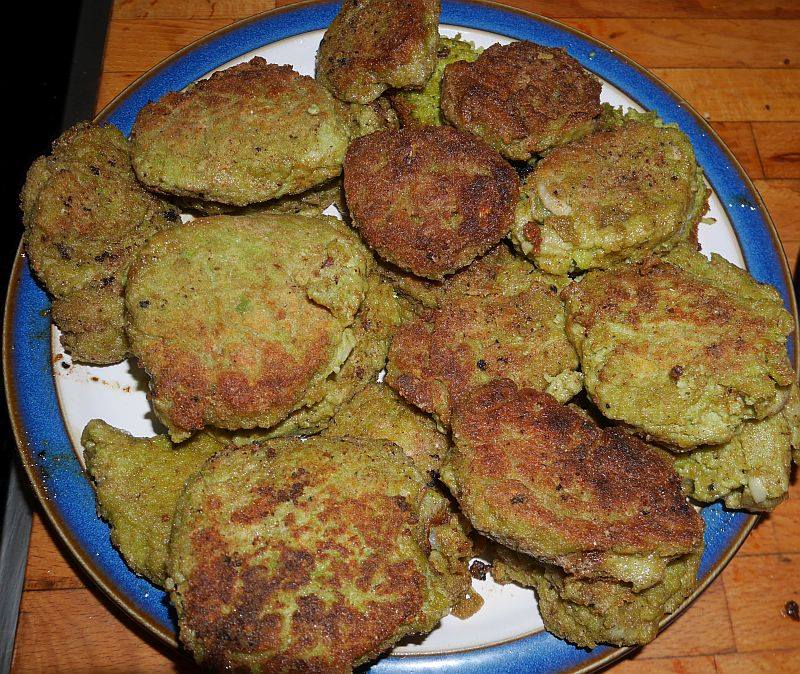
Tag Archives: Sankthans-sjalott
ARTIKLER OM FLERÅRIGE GRØNNSAKER FRA HAGETIDEND 2021
I 2021 publiserte Norsk Hagetidend en serie artikler jeg hadde skrevet om 10 av mine favoritt flerårige grønnsaker til Norsk Hagetidend. Alle artiklene kan nå bli lastet ned ved å klikke på lenkene nedenfor!
English: In 2021, I wrote a series of two page articles about my favourite perennial vegetables for Norsk Hagetidend (the magazine of the Norwegian Horticultural Society) in Norwegian. The complete series can be found below.
The plants are (scroll down to all the articles):
February 2021 Caucasian spinach / stjernemelde (Hablitzia tamnoides)
March 2021 Horseradish / pepperrot (Armoracia rusticana)
April 2021 Sea kale / strandkål (Crambe maritima)
May 2021 Nodding onion / prærieløk (Allium cernuum)
June 2021 Udo (Aralia cordata)
July 2021 St, Jansuien / sankthansløk (Allium x cornutum)
August 2021 Cherokee spinach / gjerdesolhatt (Rudbeckia laciniata)
September 2021 Hosta / bladlilje (Hosta spp.)
October 2021 Patience dock / hagesyre (Rumex patientia)
November 2021 Persian shallot / persisk sjalott (Allium stipitatum)
Veggie wholegrain pizza with New Zealand Spinach
We ate at home!
Johannes’ Shallot
There is a special perennial onion which was traditionally harvested on this day in the Netherlands, which I believe to have a much large potential than its current status as a local food crop, as it is so much easier to grow, in particular in areas increasingly suffering from summer droughts and water shortages, along with many other perennial vegetables. If nothing else, it complements shallots and onions in that it is available much earlier in the year!
On a visit to the Utrecht Botanical Gardens in the Netherlands some years ago, I’d photographed an onion called Sint-Jansui and given the botanical name Allium fistulosum var. proliferum.

Botanist Gerard van Buiten at Utrecht later wrote to me “Ah, I see you have found our “St Jansuien! Yes, it is an old local variety, grown around Utrecht. One of our gardeners used to grow it on his nursery a long time ago. Every year on “St. Jansdag”, a box of onions was delivered at Paleis Soestdijk, where Queen Juliana and Prince Bernhard used to live. It is grown nowadays in some urban garden projects in the city”.
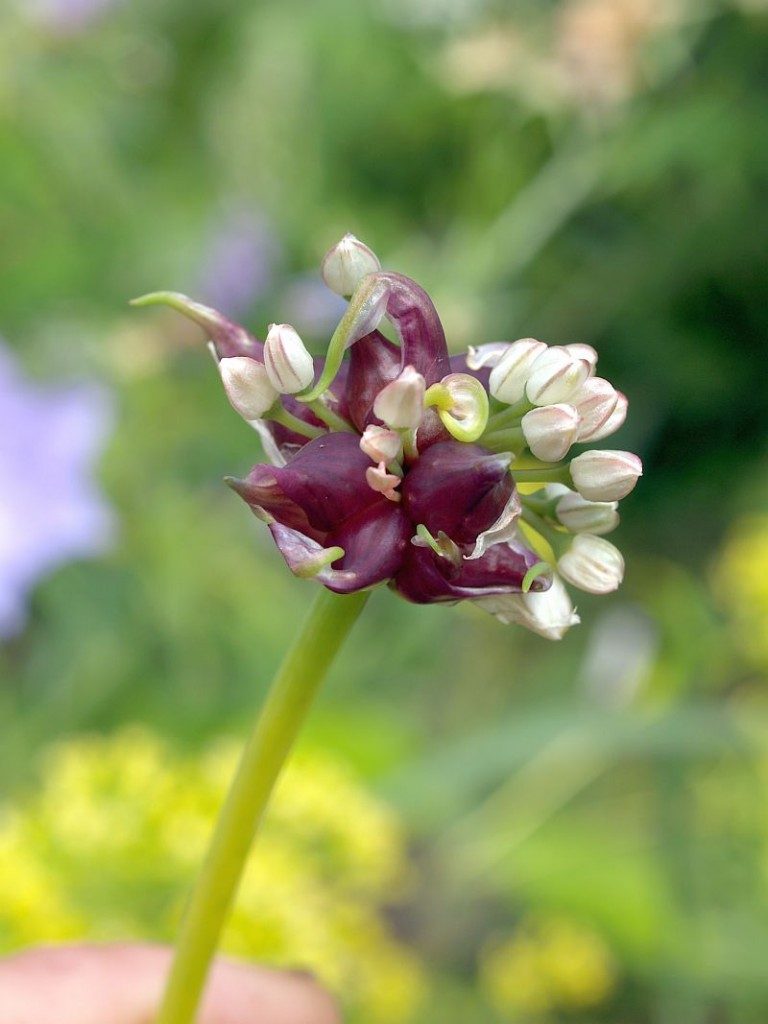
It turns out that this onion is not related to Allium fistulosum and is classified as a triploid hybrid onion Allium x cornutum which has been found both in Europe (Netherlands, France and Croatia) as well as India from where, it is speculated it may have originated. Like Egyptian onion / walking onion (Allium x proliferum), it is sterile and produces bulbils in its inflorescence. I’ve only experienced flowering of this once in 10 years of growing A x cornutum (see below). 10 years ago, Dr. Reinhard Fritsch had sent me 3 accessions from the German gene bank IPK Gatersleben, but only one of these has proven hardy here, although the French accession survived a few years. The other was from India and died the first winter.
In 2014, an open access paper appeared in the BMC Plant Biology journal (see https://bmcplantbiol.biomedcentral.com/articles/10.1186/1471-2229-14-24). This study combined molecular, phylogenetic and cytogenetic data and provided evidence for a unique triparental origin A. × cornutum with three putative parental species, A. cepa, A. pskemense, and A. roylei. Hardiness is probably bestowed by Allium pskemense which has been growing in the Ringve Botanical Gardens in Trondheim for many years.
I had planted the Croatian accession in the new Allium garden at the botanical gardens in Trondheim a couple of years ago and I started harvesting it the other day as it starts to die back at this time of year and looks untidy:
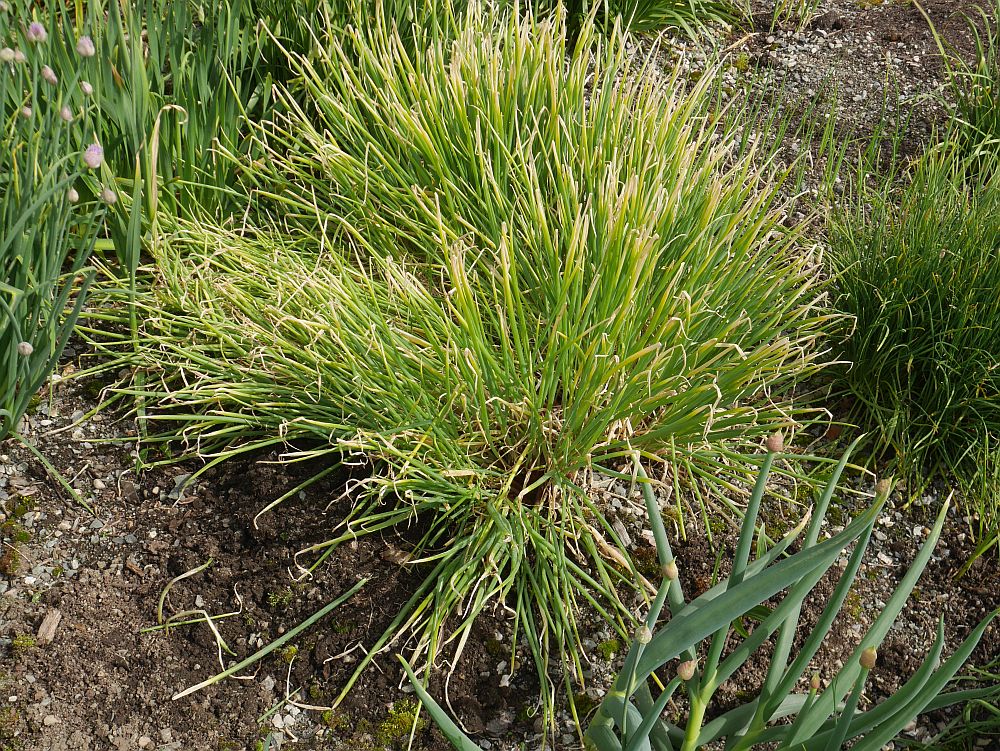
In this little patch, there were an enormous amount of onions, admittedly a bit on the small size, but relatively easy to peel and far outyielding shallots here! I will now harvest these and replant to see how well these yield after one year of growth (I am unsure as to exactly when these were planted, but this may be two years of growth).
I decided to use a small part of this harvest in making bhajis (see http://www.edimentals.com/blog/?p=21561)…and they were delicious!
In Croatia, Puizina, 2013 says: “The term ‘shallot’ in Croatia denotes three genetically and morphologically different, vegetatively reproduced relatives of the common onion, Allium cepa, which are mainly traditionally cultivated for consumption and as a spice: A. cepa Aggregatum group, A. × proliferum and A. × cornutum”. Further, the triploid shallot is “traditionally cultivated in South and coastal Croatia under the name ‘Ljutika’ and it is very popular as a spice and condiment due to its tasty bulbs and leaves”….and “In contrast to most flowering species of Allium in which the leaves are already dying back at flowering time, triploid shallots are perennials, their leaves remain green and suitable for use during entire year”. Ban (2019) shows morphological comparisons of all three types of “shallot” and demonstrates that there are different forms of Allium x cornutum in cultivation, differing in leaf cross-section, bulb shape and leaf waxiness. Bulbs are traditionally preserved in vinegar (Puizina, 2013) as they are difficult to store, resprouting after harvest. It is also stated that A. x cornutum is tolerant of drought and poor soil, enabling it to persist in wild habitats. In fact my own accession of the Croatian shallot originates from such a habitat:
Plant passport data from IPK Gatersleben: “SOURCE – Croatia: Jugoslawien 1985 Dr Hanelt Nr. YUGHAN-85: 5, weedy: Tal zwischen Male Grablje und Milna, offengelassene Olivenpflanzung” (valley between Male Grabje and Milna, open olive plantation). This area has a very different climate than Trondheim, indicating that this is also a very adaptable onion.
The real St. Jansuien shallot from the Netherlands has now also been planted in the onion garden in Trondheim.
I will be making Johannes’ shallots (Sankthans-sjalott) available to members of Norwegian Seed Savers (KVANN) through our autumn catalogue (membership can be had by signing up here: https://kvann.no/bli-medlem . My grandson will also get a packet of onions for his birthday (but, don’t tell him yet…I want it to be a surprise ;) )
References
Ban, S.J., 2019. Samples included in DNA analysis. SafeAlliDiv meeting, Olumuc, April 2019 (Symposium presentation).
Puizina, J., 2013. Shallots in Croatia – genetics, morphology and nomenclature. Acta Bot. Croat. 72 (2), 387–398.

